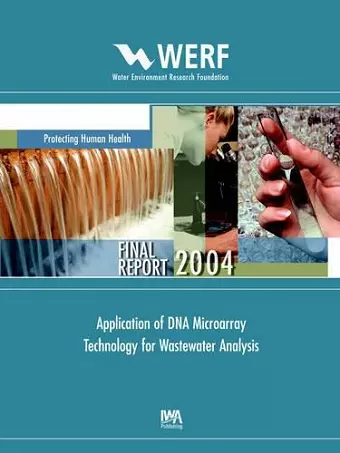Application of DNA Microarray Technology for Wastewater Analysis
Pierre Payment author F Berthiaume author R Brousseau author K Lemarchand author L Masson author C Maynard author P Bayardelle author J Harel author
Format:Paperback
Publisher:IWA Publishing
Published:30th Sep '04
Currently unavailable, and unfortunately no date known when it will be back

Deoxyribonucleic acid (DNA) microarrays are widely used for differential expression studies and for detection of virulence genes in pure bacterial cultures. Their use in complex microbial samples, such as soil and wastewater, has been relatively less studied. This report presents the results of a systematic effort to apply DNA microarrays to pathogen detection and to bacterial source tracking (BST) in wastewater. Parameters such as the method of DNA extraction from the samples, the type of immobilized probe (whether polymerase chain reaction [PCR] amplicons or oligonucleotides), the length and method of immobilization of oligonucleotides, the method of DNA labelling, the combination of PCR amplification with microarray hybridization and the choice of PCR targets have been optimized. Results indicate that the combination of PCR followed by microarray hybridization can detect pathogens in wastewater samples down to a 0.1% detection limit. The use of microarrays for bacterial source tracking gave promising results on human samples, however the probes used in this study only provided signals for general indicators of fecal contamination when used on samples of animal origin. The overall conclusion is that microarray technology has not yet reached the stage of routine use for microbiological analysis of wastewater. This report demonstrates: That the hybridization of total genomic DNA on microarrays has a high detection limit, of the order of 10^7 genomes; That the use of long oligonucleotides or PCR amplicons from 16S rDNA, or cpn60 probes has insufficient specificity to differentiate several important pathogens, especially within the Enterobacteriaceae family; That the use of short oligonucleotide immobilized probes coupled with PCR amplification of conserved genes, such as 16S rDNA, cpn60, or wecE, can detect pathogens in wastewater down to a 0.1% (DNA weight/weight) concentration; and The potential of DNA microarrays in BST, even if further research work remains necessary to achieve this goal.
ISBN: 9781843397274
Dimensions: 234mm x 156mm x 18mm
Weight: unknown
102 pages